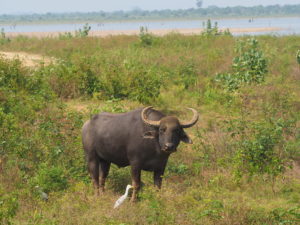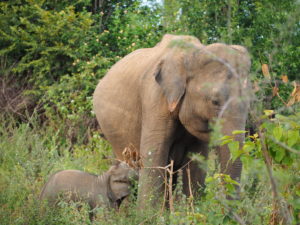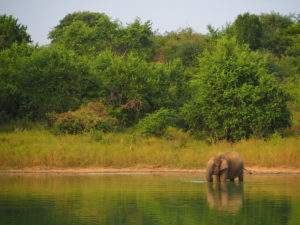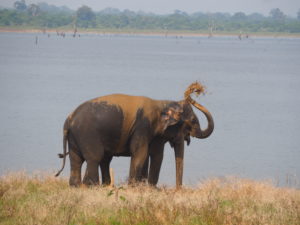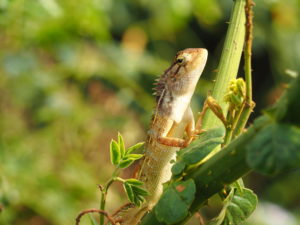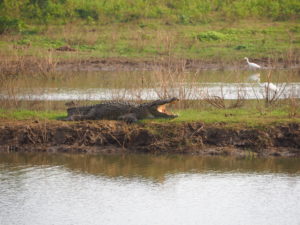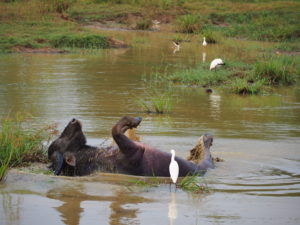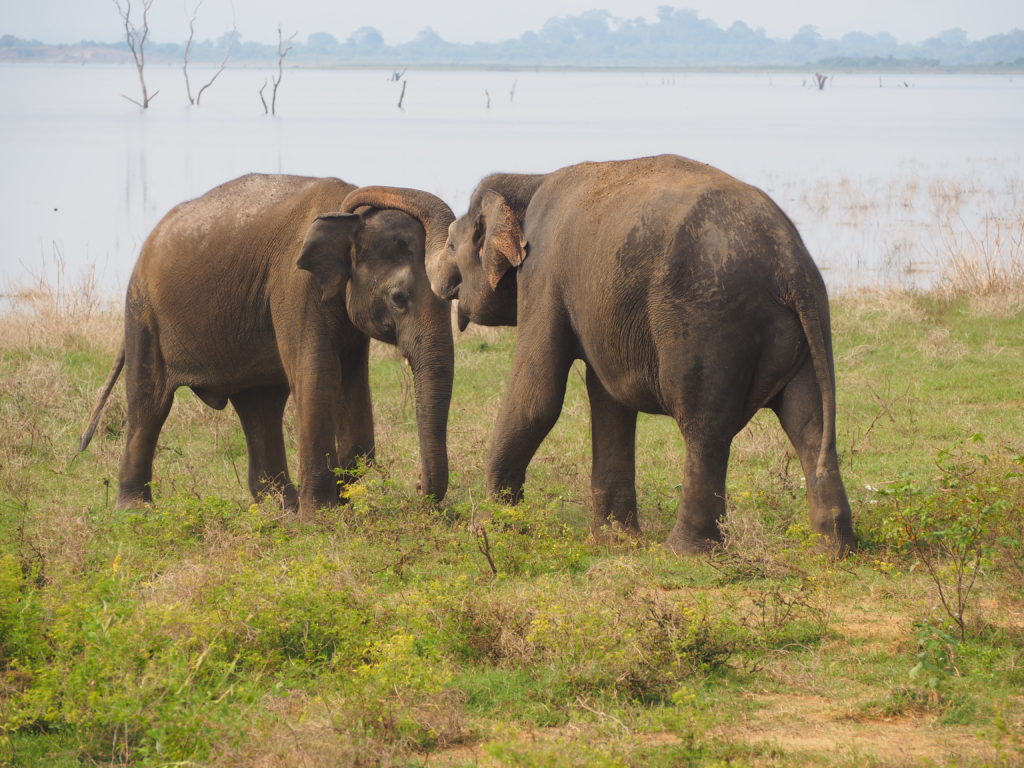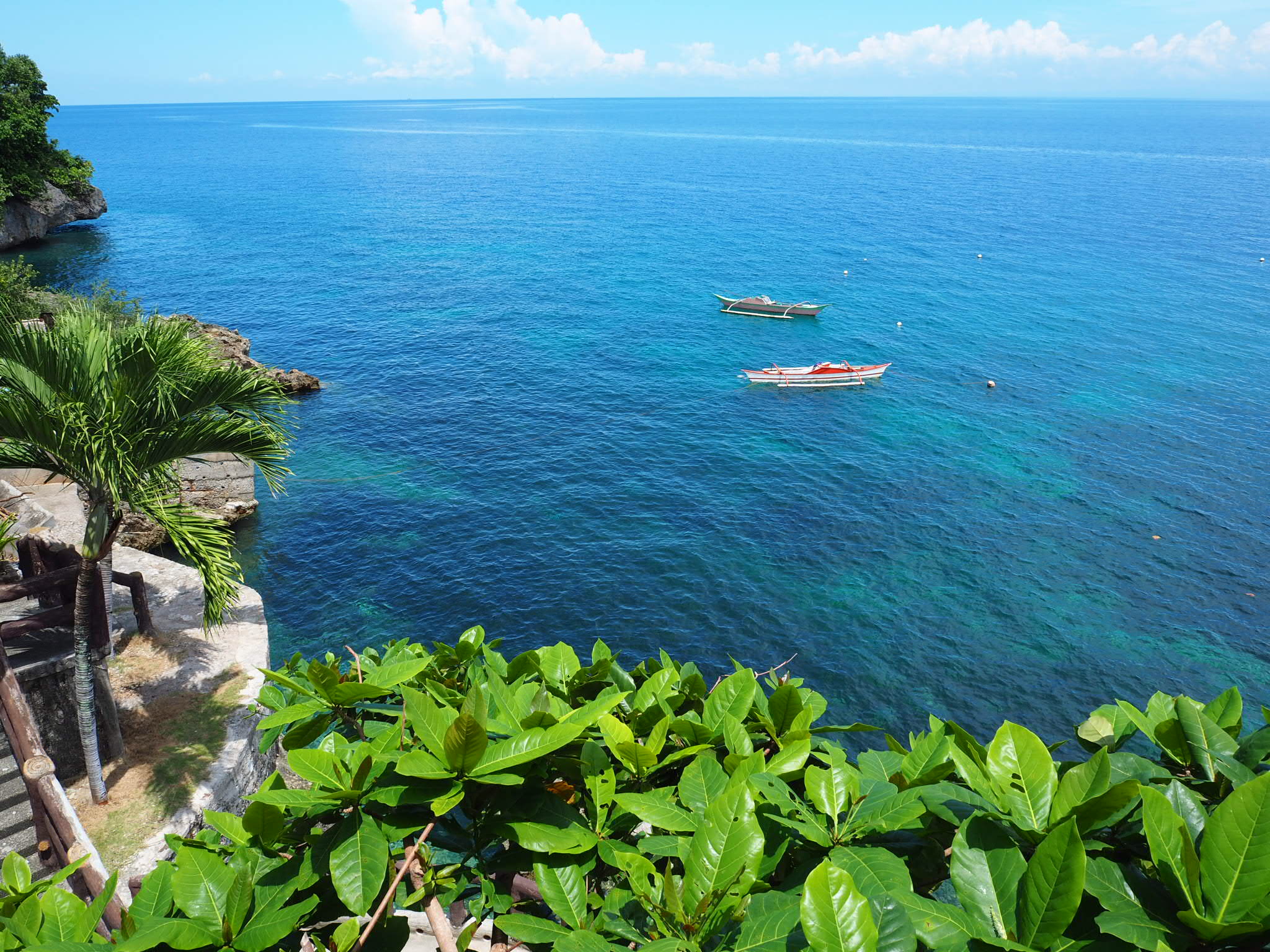When is the best time to do a safari at Udawalawe
Udawalawe National Park, located on the southern fringes of the hill country is one of Sri Lanka’s premier safari destinations. Over the last few years accommodation has sprung up around the edges of the park making it more accessible than ever. Generally travelers will arrive from the south, Tangalle, Mirissa, Hiriketiya etc or from hill country, usually Ella.
If you want to check out Sri Lanka’s other awe-inspiring creatures check out our article on blue whale watching in Mirissa.
Getting there
Bus
From the south – Direct bus from Tangalle, takes approximately 2 hours
From the north (Ella) – 3 buses (at time of writing) – Ella to Wellawaya, Wellawaya to Embilipitiya and Embilipitiya to Udawalawe
Car
From the Tangalle – 4500 rupees
From Ella – 6500 rupees.
We came from Ella and took a car as we wanted to have time to do a safari the afternoon we arrived.
Where we stayed
We stayed at the fantastic Splendid Lake View Lodge. Very close to the park, good food and the owners run their own excellent safari.
How the Safaris Work
When you do a safari at Udawalawe you pay for your entrance, vehicle entrance and then a fee for the driver. Your entry ticket includes a guide. Therefore a guide should not cost anything extra. So if you are told that a guide needs to be paid, this is not the case. They are paid by the government and peoples entrance tickets covers their salaries. However if you do have a guide in addition to a driver they will expect a tip.
We did our safari through our guesthouse. The fee for 2 people was 11000 rupees with nothing extra. For 4 people it was 10000 per couple with nothing extra.
Do you need a guide?
In our case we had Samanther, the owner of our guesthouse, as our driver and guide. He helped us spot a huge amount of wildlife and was able to get away from the other jeeps the vast majority of the time. On both safaris we did not use a guide and to be honest I doubt a guide would have made much difference. If at any point we wanted to stop Samanther told us to just tap the roof of the jeep, and before we left a place he would always check with us first.
Is it busy?
This is one of the most popular safari destinations in Sri Lanka. As a result do not expect to have the park to yourself. That being said it is very easy to lose other jeeps. There are a few key points where large numbers of wildlife gather, but aside from that we had a max of 2 other jeeps around us watching wildlife.
Usually the main busy spots will be around the waters edge, particularly in the heat of the afternoon as elephants and water buffalo will come to to bathe. At these spots it is fantastic to see large numbers of wildlife, but the number of other jeeps can be a little frustrating. When you leave these areas the park feels far less crowded. Most of our best experiences came on the roadside where we would be lucky enough to numerous groups of elephants feeding, relaxing and playing.
The reason we chose Udawalawe over Yala was down to stories and reviews we’d heard and read saying that Yala was very, very crowded. This didn’t appeal to us, and we really felt we made the right call.
Which is quieter morning or afternoon?
This is an easy question; afternoon for sure. Many travelers come in the day before and do a morning safari the next day. We wanted to do an afternoon safari as a few friends had told us that there was more wildlife out and about. Plus, dusk would give great light for photographs!
Another advantage of of an afternoon safari is that many more of the animals will be playing the water, particularly between 2-4pm. We were lucky enough to see a group of 9 elephants splashing around in a lake due west fo the entrance.
We went to different areas for each safari, meaning we got to see more of the park, a large variety of wildlife. Also it was clear Samanther knew particular places that would be better for morning and afternoon safaris.
What did we see
Afternoon
Elephants: Between 70 and 80. We were lucky enough to see them bathing and playing in the lake. We also saw 2 fights, one between 2 adolescent males and another between 2 fully grown females. We also saw 5 baby elephants, including one that was suckling from its mum.
Water Buffalo: Lots and lots, we were lucky enough to see one rolling around in the water which was quite a sight.
Crocodiles: Saw around 6 crocodiles all in the same spot.
Monkeys: Lots and lots of macaques playing around a lake.
Jackal: We were lucky enough to see 2 Jackals, albeit from quite far away.
Birds: Lots of bee eaters, kingfishers, painted storks and eagles.
Lizards: We saw 3 huge land monitor lizards, as well as many smaller lizards sunning themselves on the tree branches.
Morning
Elephants: Between 30 and 40 elephants. Most of the elephants we saw were eating and hanging out amongst the bushes. We saw less elephants than in the afternoon but we had 2 elephants that ate the plants right next to our jeep, giving us a very up close experience.
Water Buffalo: Once again we saw lots and lots of water buffalo, but this time we were lucky enough to see 3 young calves.
Crocodiles: Saw the same number as in the afternoon, but this time at 3 different spots. We were also luck enough to see a crocodile catching and eating a fish in the lake!
Mongoose: Saw one of these fury critters around a lake, however he was sadly being tracked by a sea eagle.
Sambar Deer: We saw plenty of these shy creatures towards the end of our safari. They kept their distance but could be easily spotted.
Monkeys: Plenty of macaques again, as well as a big group of beautiful langurs playing on the ground.
Birds: A greater variety of bird life. We saw all the same species as the day before plus a number of huge sea eagles up close. We were also lucky enough to see on catching a fish from a lake.
Lizards: Sadly no land monitors, but we did see 1 on 2 little lizards sunning themselves in the trees.
Overall
In the afternoon we saw more elephants, and they were also far more active and playful than in the morning. However in the morning we saw a greater variety of wildlife. Both safaris offered a fantastic opportunity to see wildlife up close. Our driver would always check with us before moving on and he did not harass or follow any of the animals. This was really nice to see as we had heard some negative stories about drivers in the national parks engaging in these practices.
Enjoy some of our favourite photos below:
